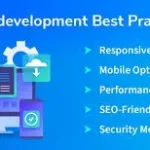
Your Freelance Career has become a popular choice for professionals across the globe, offering flexibility, independence, and the opportunity to work on diverse projects. Whether you’re looking for a full-time freelance career or just want to make extra income on the side, finding freelance work can be a rewarding venture. With the rise of online platforms and remote work, there are now more opportunities than ever to tap into the freelance market.

In this guide, we’ll explore how to find freelance work, identify the best platforms for freelancers, and offer practical tips for standing out in the competitive freelance landscape.
What is Freelancing?
Freelancing refers to working independently for multiple clients or companies on a project basis, rather than being employed full-time by a single employer. Freelancers typically offer specialized services such as writing, graphic design, web development, digital marketing, and more. They often work from home or remotely, giving them the flexibility to choose their clients, set their own schedules, and work from anywhere.
The freelance economy has grown significantly, providing ample opportunities for skilled individuals to monetize their expertise and work on projects that align with their interests and talents.
Benefits of Freelancing
Before diving into the process of finding freelance work, it’s essential to understand the benefits of freelancing:
- Flexibility: Being able to choose your own hours is one of the biggest benefits of freelancing. You are free to decide how, when, and where you work.This flexibility makes freelancing appealing to individuals seeking a better work-life balance.
- Diverse Projects: Freelancers have the opportunity to work on a wide range of projects, across different industries and clients. This diversity keeps the work interesting and allows you to continuously develop new skills.
- Independence: As a freelancer, you’re your own boss. You have the autonomy to choose which clients you want to work with and which projects to take on. This independence allows you to build your own brand and reputation.
- Higher Earning Potential: Freelancers can often charge higher rates than salaried employees, especially if they have specialized skills in high-demand areas. Additionally, freelancers can take on multiple projects at once, which can increase their overall earnings.
- Location Freedom: Freelancing allows you to work from anywhere, whether that’s at home, in a co-working space, or while traveling. This is particularly appealing to digital nomads or those seeking to escape the traditional office setting.
How to Find Freelance Work: A Step-by-Step Guide
Now that we’ve covered the benefits of freelancing, let’s dive into the key steps you need to take to find freelance work successfully.
1. Identify Your Niche and Services
The first step in finding freelance work is to clearly define your niche and the services you offer. Specializing in a specific area makes it easier to position yourself as an expert, which can help attract clients. Some questions to ask yourself:
- What skills do I have that are in demand?
- What industries or types of clients am I interested in working with?
- What services can I offer that solve specific problems for businesses or individuals?
Popular freelance services include:
- Writing and Editing: Content creation, copywriting, blog writing, technical writing, or proofreading.
- Graphic Design: Logo design, branding, web design, or illustration.
- Web Development: Front-end, back-end, or full-stack development.
- Digital Marketing: SEO, social media marketing, paid advertising, or email marketing.
- Consulting: Business strategy, career coaching, or financial consulting.
By narrowing your focus, you’ll make it easier for potential clients to understand what you bring to the table and why they should hire you.
2. Build a Strong Portfolio
The most effective weapon you have as a freelancer is your portfolio.It showcases your skills, past work, and the value you provide to clients. If you’re just starting, consider doing a few projects for free or at a discounted rate to build a portfolio. Once you have some examples of your work, be sure to organize your portfolio effectively, displaying your best work first.
Your portfolio should include:
- Samples of your work: Include projects you’ve worked on, whether it’s design work, writing samples, case studies, or development projects.
- Client testimonials: If possible, ask previous clients to provide testimonials that highlight the quality of your work and your professionalism.
- Case studies: If applicable, provide detailed case studies that show the process you followed, the challenges you addressed, and the results you achieved for clients.
Creating a website for your portfolio is an excellent way to present your work professionally. If you’re not tech-savvy, platforms like Wix or Squarespace offer easy-to-use tools for building a freelance portfolio site.
3. Leverage Freelance Platforms
There are numerous online freelance platforms where you can find job listings and connect with potential clients. These platforms serve as marketplaces for freelancers and clients, making it easier to find freelance work quickly. Some of the most popular platforms include:
- Upwork: Upwork is one of the largest freelance platforms, offering a wide range of job categories such as writing, design, development, marketing, and more. Clients post jobs, and freelancers bid on them, providing their proposals and pricing.
- Fiverr: Fiverr is an excellent platform for independent contractors who wish to offer particular “gigs” or services at different pricing points.. Whether you offer graphic design, voice-over work, or website development, Fiverr can help you attract clients looking for one-off services.
- Freelancer: Freelancer is another popular platform that connects freelancers with businesses and individuals who need project-based work. It’s similar to Upwork in structure but caters to a wide variety of job categories.
- Toptal: Toptal is a more exclusive freelance platform that specializes in connecting highly skilled freelancers with top companies. If you have experience in software development, design, or finance, Toptal could be a good fit.
- PeoplePerHour: This platform allows freelancers to set hourly rates and get hired for specific projects. It’s a great option for short-term, quick jobs.
By creating profiles on these platforms, you’ll have access to a constant stream of freelance job postings. Be sure to optimize your profile by including relevant skills, portfolio pieces, and detailed descriptions of your services.
4. Network and Build Relationships
When looking for freelance job, networking is essential.Many freelance opportunities come through word-of-mouth referrals or connections within your industry. Make an effort to attend industry-related events, both online and offline, and actively participate in online communities.
Some tips for effective networking:
- Join social media groups: Facebook, LinkedIn, and Reddit have numerous groups dedicated to freelancers and various industries. Engage with other members by sharing advice, participating in discussions, and offering help when needed.
- Attend industry events: Industry conferences, webinars, and workshops provide excellent networking opportunities. Introduce yourself to other professionals, exchange contact information, and follow up with them after the event.
- Build long-term relationships with clients: Once you’ve landed a client, focus on delivering outstanding work and building a long-term relationship. Satisfied clients are likely to hire you for future projects and recommend you to others.
5. Pitch Your Services Directly
While freelance platforms and networking are effective, another approach is to pitch your services directly to potential clients. Research companies, businesses, or individuals who may need your services and reach out to them with a personalized pitch.
Some tips for crafting a compelling pitch:
- Research the client: Understand their business, their pain points, and how your services can help them achieve their goals.
- Personalize your message: Generic pitches are unlikely to stand out. Tailor your pitch to each potential client, addressing their specific needs and offering solutions.
- Highlight your value: Focus on how your skills and experience can bring value to the client. Share relevant examples of your past work, and offer a solution to a challenge they may be facing.
6. Set Competitive Rates
One of the challenges of freelancing is determining your rates. You want to ensure that your rates are competitive while still reflecting the value of your work. Research the going rates for your industry, taking into account your experience, skill set, and the complexity of the project.
There are a few common pricing models freelancers use:
- Hourly Rate: Charging by the hour is straightforward, but it may not always reflect the true value of the work you’re doing. Make sure your hourly rate accounts for your expertise and the time required to complete the project.
- Project-Based Pricing: Charging a flat rate for a project can be more appealing to clients, as they know exactly what they’ll pay upfront. Be sure to outline the scope of work clearly to avoid scope creep.
- Retainer Pricing: Some freelancers work on a retainer basis, where clients pay a recurring fee (usually monthly) for ongoing services. This model works well for long-term projects or recurring tasks like content creation or social media management.
7. Focus on Building a Personal Brand
Freelancers need to create a strong personal brand that helps them stand out from the competition. Your personal brand should reflect your values, expertise, and the unique qualities you bring to the table.
Some ways to build your personal brand:
- Create a professional website: Your website should act as a hub for potential clients to learn more about you, your services, and your portfolio.
- Develop a social media presence: Use social media to share your work, engage







